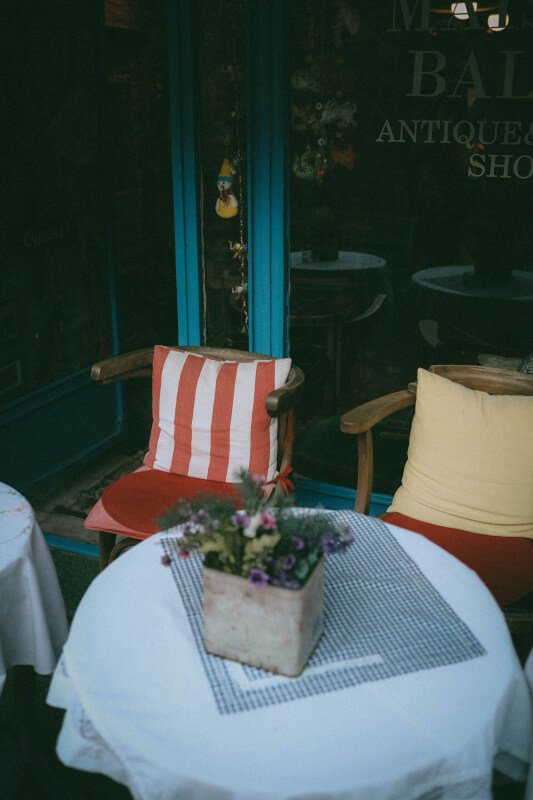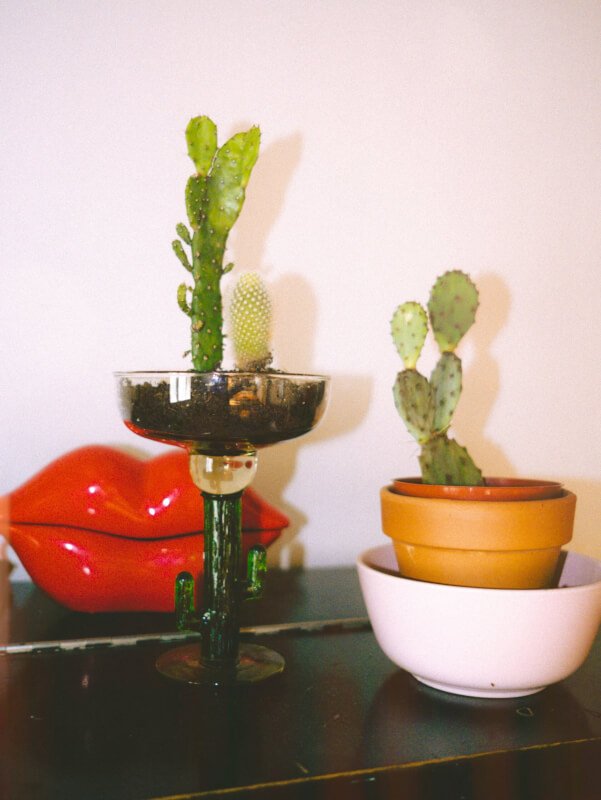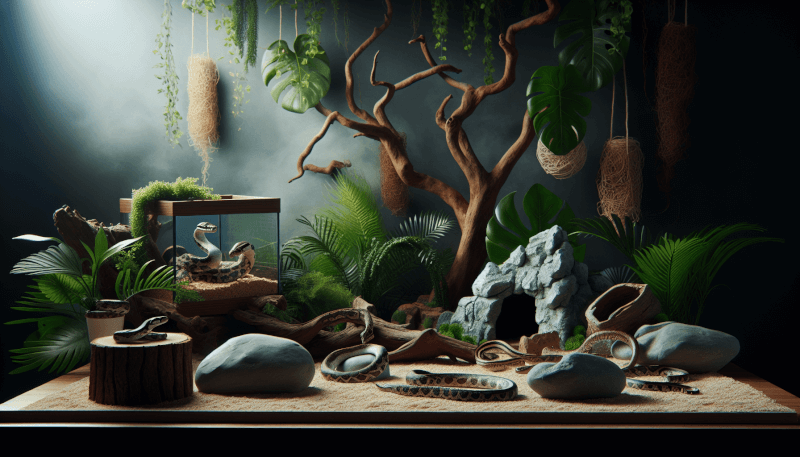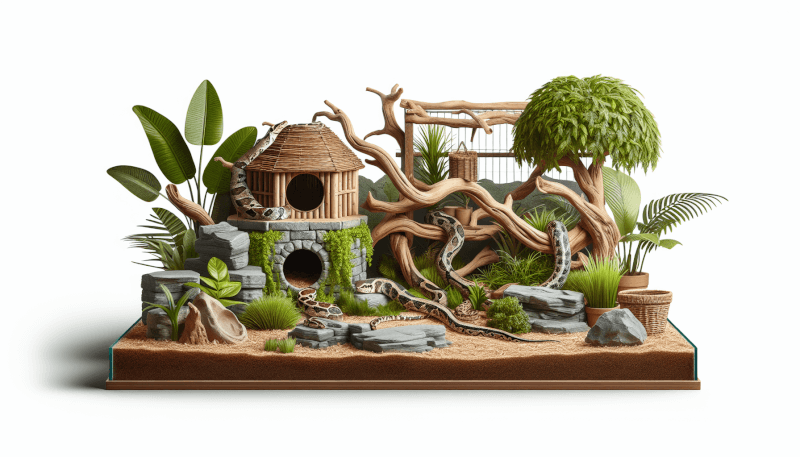Are you a snake owner looking to create a comfortable and stimulating environment for your scaly friend? Well, look no further! In this article, we will guide you through the process of choosing the perfect decor and hideouts for your snake’s enclosure. From naturalistic elements that mimic their natural habitat to cozy hideouts that provide a sense of security, we’ve got you covered. So, let’s dive in and transform your snake’s enclosure into a haven that they will love to slither around in!
Choosing the Right Decor for Your Snake’s Enclosure
Natural vs. artificial decor
When it comes to decorating your snake’s enclosure, you have the option of choosing between natural and artificial decor. Natural decor includes items such as live plants, driftwood, rocks, and natural substrates, while artificial decor includes realistic artificial plants, caves, rocks, and substrates. Each option has its own advantages and considerations to keep in mind. Natural decor can provide a more realistic and aesthetically pleasing environment for your snake, while artificial decor often offers easier maintenance and cleaning.
Selecting appropriate materials
Regardless of whether you choose natural or artificial decor, it is essential to select materials that are safe for your snake. Avoid using toxic materials such as certain types of wood or plants that can be harmful if ingested. Research and educate yourself about potential hazards before introducing any new decor into your snake’s enclosure. Always prioritize your snake’s health and well-being when selecting materials.
Consideration for easy cleaning
Keeping your snake’s enclosure clean is crucial for their overall health and hygiene. When choosing decor, consider how easy it will be to clean and maintain. Opt for items that are non-porous and can be easily wiped or washed down. Avoid decor that may absorb moisture, leading to the growth of bacteria or mold. Additionally, choose removable and washable accessories that you can regularly clean to ensure a clean and hygienic environment for your snake.
Providing different textures
Snakes, like any other animal, will appreciate having different textures in their enclosure. This can help to stimulate their senses and provide enrichment. Incorporate a variety of substrate textures, such as rough and smooth surfaces, to mimic their natural habitat. Consider adding different types of decor that offer both hard and soft materials for your snake to explore and interact with. Providing a range of textures will make your snake’s environment more interesting and engaging for them.
Avoiding sharp or hazardous objects
Safety should always be a top priority when choosing decor for your snake’s enclosure. Avoid using items with sharp edges or points that could potentially harm your snake. Snakes are known to explore their environment, and they may accidentally injure themselves on sharp objects. Additionally, be cautious of any toxic materials that may be harmful if ingested. Check all decor for small parts that could be swallowed, as this could pose a choking hazard for your snake.
Creating Hideouts for Your Snake
Understanding the importance of hideouts
Hideouts are essential for snakes as they provide a sense of security, privacy, and comfort. In the wild, snakes seek out hiding spots to stay protected from predators and to regulate their body temperature. Providing hideouts in your snake’s enclosure will help replicate their natural environment and make them feel more at ease in captivity.
Choosing the right size and number of hideouts
It is crucial to have the right size and number of hideouts in your snake’s enclosure. Each snake should have at least one hideout, but it is ideal to have multiple hideouts located in different areas of the enclosure. This allows your snake to choose the perfect resting spot according to their preference and the environmental conditions. Additionally, consider the size of the hideouts. Snakes prefer snug hideouts that make them feel secure. However, ensure that the hideout is not too small for your snake, allowing them to comfortably enter and exit the space.
Utilizing both natural and artificial hideouts
Similar to decor, you have the option of using both natural and artificial hideouts in your snake’s enclosure. Natural hideouts can include caves, rocks, and hollow logs, while artificial hideouts can be made of various materials such as plastic or resin. By providing a mix of natural and artificial hideouts, you can create a diverse and visually appealing environment for your snake.
Considering the snake’s species and size
Different snake species have varying preferences and habits when it comes to hiding. Some snakes may prefer more open hiding areas, while others may prefer tight, enclosed spaces. Research your snake’s specific species and size to determine their hiding preferences. This will help you select the most suitable hideouts that cater to their individual needs.
Creating hiding areas in different temperature zones
Snakes are ectothermic creatures, meaning they rely on external sources of heat to regulate their body temperature. To create an optimal environment for your snake, it is essential to provide hiding areas in different temperature zones. This allows your snake to move around and choose the temperature that suits them best. Place hideouts near heat sources, such as heat mats or lamps, to provide your snake with a warm hiding spot. Additionally, consider including damp hides to help facilitate shedding, as increased humidity can aid in the shedding process.

Natural Decor Options
Using live plants
Live plants are an excellent natural decor option for your snake’s enclosure. Not only do they add visual appeal, but they also provide added benefits such as improved air quality and increased humidity. When selecting live plants, ensure they are non-toxic to snakes and will thrive under the conditions of your snake’s enclosure. Some popular plant choices for snake enclosures include pothos, snake plants, and bromeliads.
Incorporating driftwood and branches
Driftwood and branches can create a realistic and natural-looking environment for your snake. These items provide climbing opportunities, different perching levels, and additional hiding spots. When using driftwood or branches, make sure they are thoroughly cleaned and free from any harmful substances or pests. Additionally, choose pieces that are sturdy and can support the weight of your snake.
Adding rocks and caves
Rocks and caves can serve as excellent hiding spots and provide texture to your snake’s enclosure. Ensure that the rocks are securely placed to prevent them from toppling over and potentially injuring your snake. Incorporate a variety of sizes and shapes to create different hiding opportunities and climbing surfaces. Natural rock formations can also help to create temperature gradients in the enclosure.
Using natural substrates
Natural substrates, such as coconut husk, cypress mulch, or aspen shavings, can add a touch of authenticity to your snake’s habitat. These substrates mimic the forest floor or desert terrain found in snakes’ natural environments. Not only do they look aesthetically pleasing, but they also allow your snake to burrow and exhibit natural behaviors. Ensure that the substrate is safe for your snake and avoid using substrates that can be ingested and cause digestive issues.
Utilizing vines and climbing structures
Vines and climbing structures add vertical elements to your snake’s enclosure, allowing them to explore and exhibit their natural climbing instincts. These items can be live or artificial and provide additional hiding spots and perching areas. Use suction cups or other secure attachments to ensure that the vines and climbing structures are stable and will not fall.
Artificial Decor Options
Using realistic artificial plants
Artificial plants can be a convenient alternative to live plants, especially for individuals who may not have a green thumb. Look for realistic artificial plants that closely resemble their live counterparts. These plants provide a natural aesthetic to your snake’s enclosure without the need for maintenance or consideration of lighting conditions. Ensure that the artificial plants are non-toxic and do not have any sharp edges or parts that could potentially harm your snake.
Incorporating artificial caves and hides
Artificial caves and hides are designed to replicate natural hiding spots. They come in various shapes, sizes, and materials, providing a wide selection to choose from. Some artificial hides even have multiple entrances and exits, allowing your snake to choose their preferred entry and exit point. When selecting artificial caves and hides, make sure they are spacious enough for your snake to comfortably fit inside.
Adding artificial rocks and logs
Artificial rocks and logs can add texture and dimension to your snake’s enclosure. They serve as additional hiding spots, climbing surfaces, or even perches. Look for artificial rocks and logs that closely resemble natural formations, providing a realistic environment for your snake. Ensure that they are made from safe materials that will not harm your snake if ingested.
Using artificial substrates
Artificial substrates are another low-maintenance option for snake enclosures. They can mimic the appearance of natural substrates without the need for regular cleaning or replacement. Artificial substrates are typically easy to wipe or rinse clean, making them a practical choice for busy snake owners. However, ensure that the artificial substrate does not have any components that may be harmful if ingested.
Utilizing artificial vines and climbing structures
Artificial vines and climbing structures can add visual interest to your snake’s enclosure while providing enrichment opportunities. These items can be easily attached to the enclosure walls or branches, creating vertical elements for your snake to explore. Check that the artificial vines and climbing structures are securely attached and won’t pose a danger to your snake or the integrity of the enclosure.

Hygiene and Easy Cleaning
Choosing decor that is easy to clean
Maintaining cleanliness and hygiene in your snake’s enclosure is vital for their health. Choose decor items that are easy to clean, such as smooth-surfaced materials that can be wiped down or rinsed off. Avoid decor that is difficult to reach or clean thoroughly, as this can lead to the buildup of bacteria or other pathogens.
Avoiding porous materials
Porous materials, such as certain types of wood or rocks, can harbor bacteria and be challenging to clean properly. Avoid using these materials in your snake’s enclosure, as they can pose a potential health risk. Opt for non-porous materials that can be easily sanitized and disinfected.
Regularly sanitizing and disinfecting decor
Make it a routine to regularly sanitize and disinfect your snake’s decor. Remove any items that can be easily cleaned and soak them in a reptile-safe disinfectant solution. Follow the instructions on the disinfectant to ensure effective cleaning. Allow the decor to air dry completely before returning it to the enclosure.
Using removable and washable accessories
Using removable and washable accessories, such as hideout mats or bedding, can simplify the cleaning process. These accessories can be easily removed, washed, and dried, ensuring that your snake’s enclosure remains clean and free from odor-causing bacteria.
Ensuring proper ventilation and airflow
Proper ventilation and airflow within your snake’s enclosure are vital for maintaining a healthy environment. Stagnant air can contribute to the growth of harmful bacteria or mold. Ensure that your snake’s enclosure has adequate ventilation points and that the decor does not impede air circulation. This will help to keep the enclosure fresh and prevent the buildup of odors.
Providing Different Textures
Variety of substrate textures
Incorporating a variety of substrate textures in your snake’s enclosure can provide sensory stimulation and mimic their natural environment. Mix and match substrates with different levels of coarseness or softness to create an interesting and engaging environment. This can encourage your snake to explore and interact with their surroundings.
Using rough and smooth surfaces
Snakes appreciate having access to both rough and smooth surfaces in their enclosure. Rough surfaces can mimic the texture of rocks or tree bark, while smooth surfaces can provide comfortable resting areas. Incorporate smooth rocks, branches, or artificial platforms for your snake to bask or relax.
Incorporating both hard and soft materials
Including both hard and soft materials in your snake’s enclosure can create a diverse and naturalistic environment. Hard materials, such as rocks or driftwood, provide climbing opportunities and support structures, while soft materials, such as bedding or fabric hides, offer comfortable resting spots.
Utilizing different textures in hideouts
Your snake’s hideouts can be enhanced by incorporating different textures. Consider adding substrate material, such as shredded paper or moss, inside the hideout to create a soft and cozy hiding spot. This can make the hideout more inviting and comfortable for your snake.
Considering the snake’s natural habitat
When selecting decor and substrates, consider your snake’s natural habitat. Research the type of terrain and textures found in their native environment. By replicating these textures in their enclosure, you can create a more enriching and visually appealing environment for your snake.

Avoiding Sharp or Hazardous Objects
Removing any sharp edges or points
Inspect all decor items carefully to ensure that they do not have any sharp edges or points that could potentially harm your snake. Sand down or file any rough areas on rocks or branches to prevent injury. Smooth out any sharp edges on artificial items to eliminate the risk of cuts or scratches.
Avoiding toxic materials
Some materials may be toxic to reptiles, so it is crucial to avoid using them in your snake’s enclosure. Research and familiarize yourself with the types of materials that may be harmful to snakes. Avoid using toxic plants, certain types of wood, or any other materials known to be toxic to reptiles.
Checking for small parts that could be swallowed
Snakes may explore their environment with their mouth, so it is essential to check all decor items for small parts that could be swallowed. Small items, such as loose rocks or accessories, can pose a choking hazard for your snake. Ensure that all items are securely attached and cannot be easily dislodged or ingested.
Considering the snake’s behavior and movements
Observe your snake’s behavior and movements to better understand their habits and preferences. Some snakes are more active climbers, while others may prefer to stay close to the ground. Take note of their behavior to avoid placing any decor items that could potentially cause falls or injuries.
Ensuring safety during shedding
Snakes shed their skin periodically, and during this process, they may appear more sensitive and vulnerable. Ensure that all decor items are smooth and free from any loose or sharp parts that could catch on the snake’s skin and hinder the shedding process. Providing a damp hideout during the shedding period can also help ease the shedding process and reduce the risk of complications.
Importance of Hideouts
Providing a sense of security and privacy
Hideouts play a crucial role in providing your snake with a sense of security and privacy. In the wild, snakes seek out hiding spots to avoid predators and to feel safe. By providing adequate hideouts in their enclosure, you enable your snake to retreat and find comfort whenever they need it.
Facilitating thermoregulation
Hideouts can help facilitate thermoregulation in your snake’s enclosure. Snakes require different temperature zones to regulate their body temperature effectively. By providing hideouts in different areas with varying temperatures, your snake can choose the ideal hiding spot to warm up or cool down as needed.
Reducing stress and anxiety
Snakes can easily become stressed or anxious in an environment that lacks proper hiding spots. By incorporating hideouts, you create a more natural and secure environment for your snake, reducing their stress levels. This can contribute to their overall well-being and promote healthy behaviors.
Promoting natural behavior
Having hideouts in your snake’s enclosure encourages natural behaviors, such as exploring, seeking shelter, or observing their surroundings from a concealed spot. Allowing your snake to engage in these natural behaviors provides mental stimulation and enrichment, leading to a happier and healthier snake.
Preventing aggression and territorial disputes
In multi-snake enclosures, hideouts are crucial in preventing aggression and territorial disputes. Snakes have their own territories and prefer to have their own personal space. By providing multiple hideouts in different areas of the enclosure, you give each snake the opportunity to claim their territory and reduce territorial conflicts.

Choosing the Right Size and Number of Hideouts
Having at least one hideout per snake
As a general rule, each snake should have at least one hideout in their enclosure. This allows them to retreat and find privacy whenever they feel the need. Regardless of the size or species of your snake, having a hideout for each individual ensures they have a designated safe space.
Placing hideouts in different areas of the enclosure
Distribute hideouts throughout your snake’s enclosure to create a sense of diversity and choice. Place hideouts in different areas, such as the warm and cool zones, to accommodate your snake’s temperature preferences. This allows your snake to move freely and choose the hiding spot that suits their needs at any given time.
Considering the snake’s growth
Snakes grow throughout their lives, so it is important to consider their future size when choosing hideouts. Select hideouts that are spacious enough for your snake to enter and exit comfortably, even as they grow. Avoid purchasing hideouts that your snake will outgrow quickly, as this may cause them stress and necessitate frequent replacements.
Varying hideout sizes for different purposes
In addition to providing hideouts of suitable size for your snake’s growth, consider incorporating various hideout sizes for different purposes. For example, larger hideouts can serve as resting places, while smaller hideouts can offer a snug space for your snake to feel secure. Varying hideout sizes adds more options for your snake to choose from and promotes natural behaviors.
Observing the snake’s preference and behavior
It is crucial to observe your snake’s behavior and preferences when it comes to hideouts. Pay attention to which hideouts your snake prefers to use and adjust accordingly. If you notice that your snake consistently chooses a particular hideout, it might indicate that they feel most comfortable in that location or type of hideout. This information can help you make informed decisions when selecting and arranging hideouts in your snake’s enclosure.
Creating Hiding Areas in Different Temperature Zones
Providing hideouts in cool and warm areas
To accommodate your snake’s thermoregulation needs, ensure that there are hiding areas available in both cool and warm areas of their enclosure. This caters to their preferences for different temperatures and allows them to regulate their body temperature effectively. Place hideouts near heat sources, such as heat mats or lamps, to create warm hiding spots for your snake to bask.
Ensuring adequate temperature gradients
Snakes require a range of temperatures to choose from to effectively regulate their body temperature. Create temperature gradients within your snake’s enclosure by placing hideouts at varying distances from heat sources. This provides your snake with options to move closer or farther away from the heat, depending on their needs.
Placing hideouts near heat sources
Snakes need warm hiding spots to aid in digestion, promote metabolic processes, and provide comfort. Place hideouts near heat sources such as heat pads or lamps. This allows your snake to comfortably hide while still benefiting from the warmth. Ensure that the heat source does not directly touch the hideout, as this can cause burns or discomfort to your snake.
Including damp hides for shedding
During the shedding process, snakes require increased humidity to help loosen their old skin. Including damp hides in your snake’s enclosure offers a safe and comfortable space for them to shed. These hides can be created by placing a moist substrate or moss inside a hideout. The higher humidity within the damp hideout aids in the shedding process and helps prevent complications.
Offering a basking spot within a hideout
Basking is an essential behavior for snakes as it aids in digestion and overall health. Provide a hideout that offers a basking spot for your snake to soak up warmth and UVB rays. This can be achieved by placing a heat lamp or basking platform within a hideout. The combination of a hiding spot and a basking area creates a well-rounded and suitable environment for your snake.
In conclusion, choosing the right decor and hideouts for your snake’s enclosure is essential for their overall well-being. Consider the preferences of your snake, their natural habitat, and their individual needs when selecting decor. Provide varied textures, hideouts of suitable size and number, and ensure a clean and hygienic environment. By creating a comfortable and stimulating enclosure, you can promote the natural behaviors and happiness of your snake.



